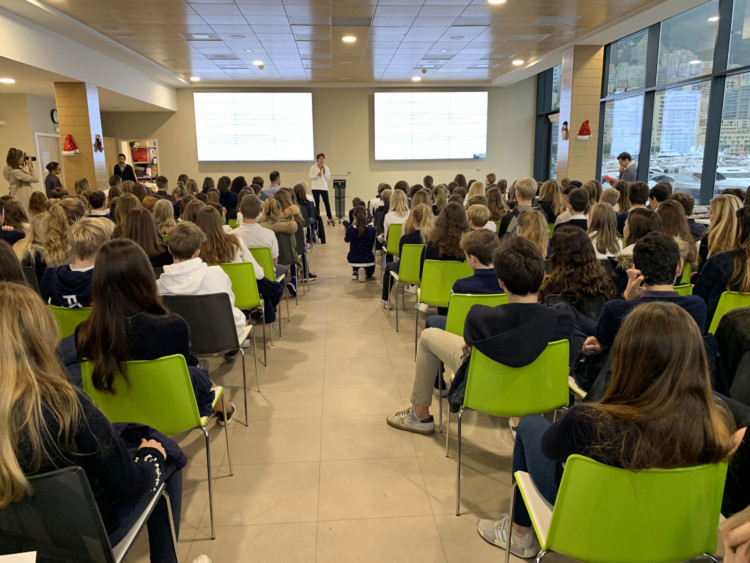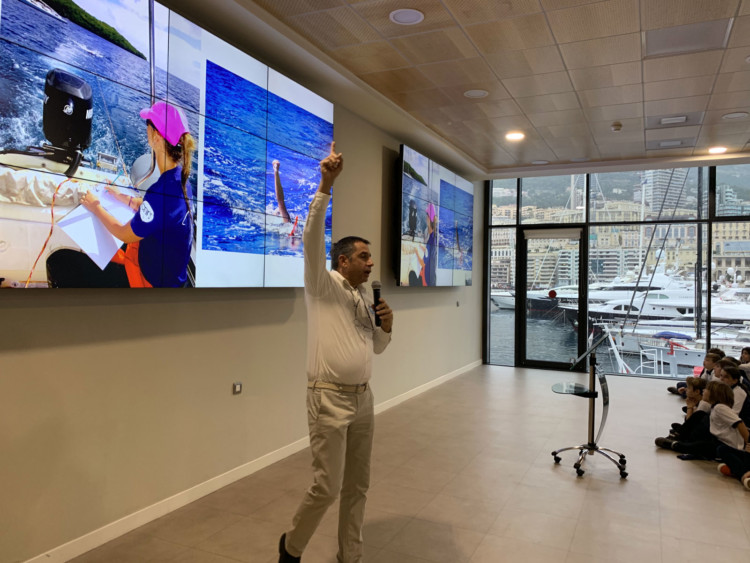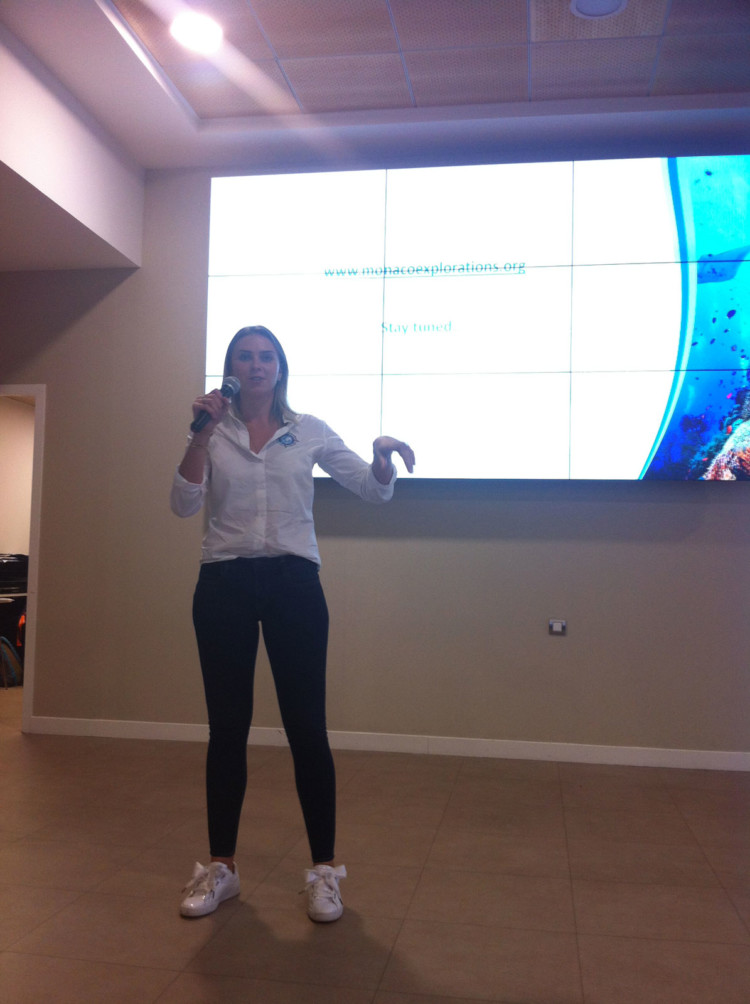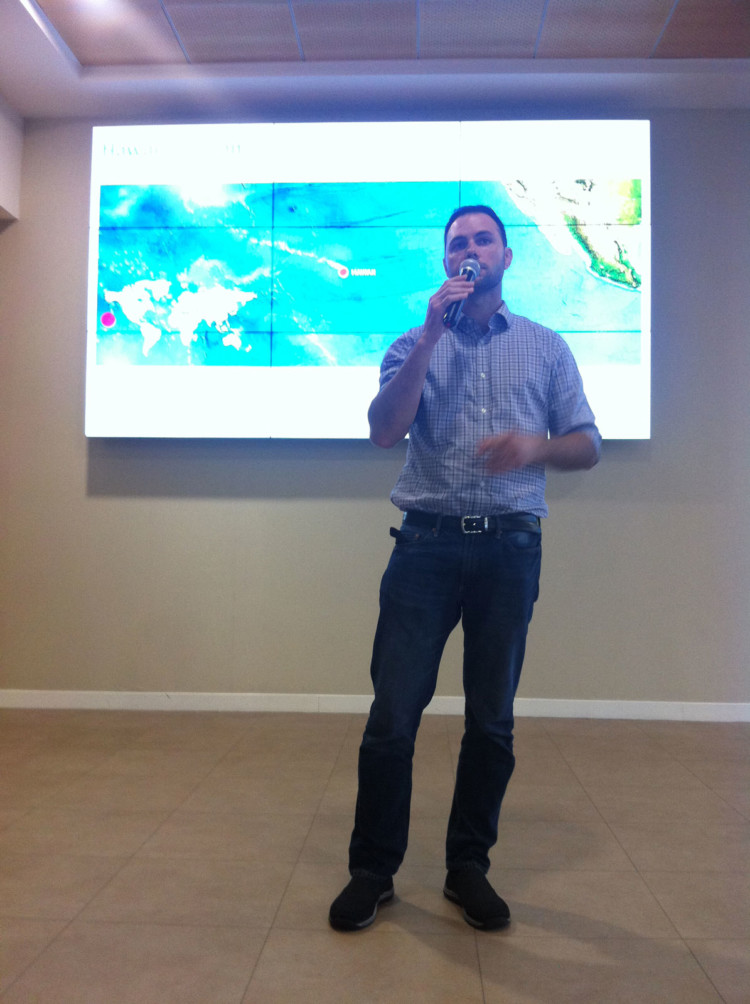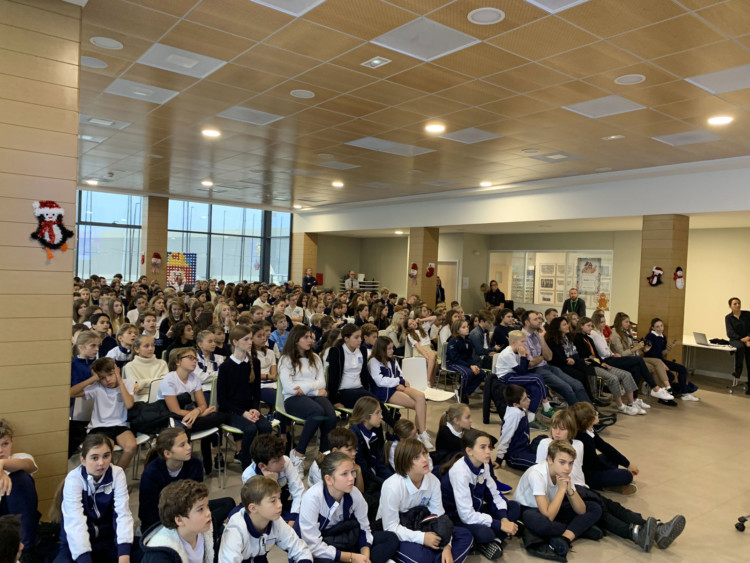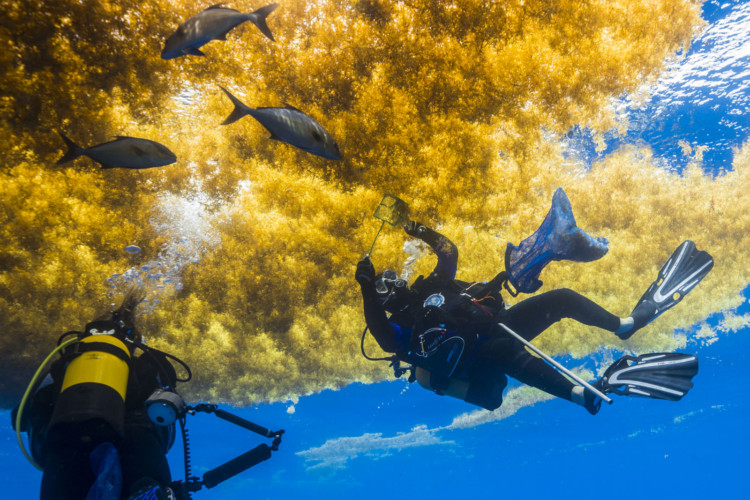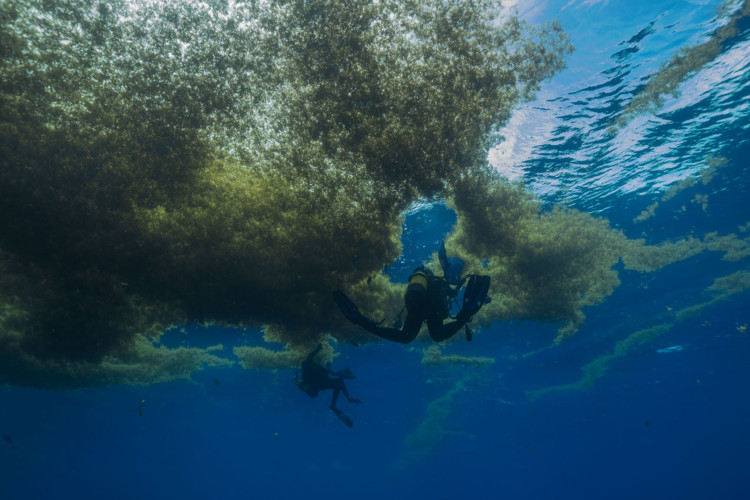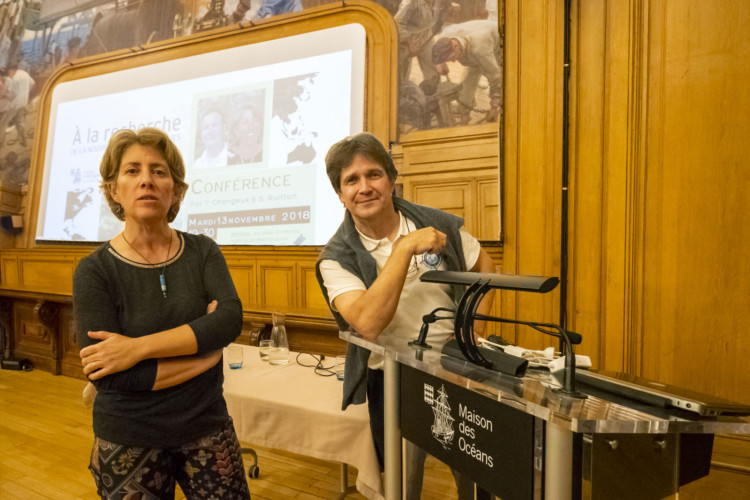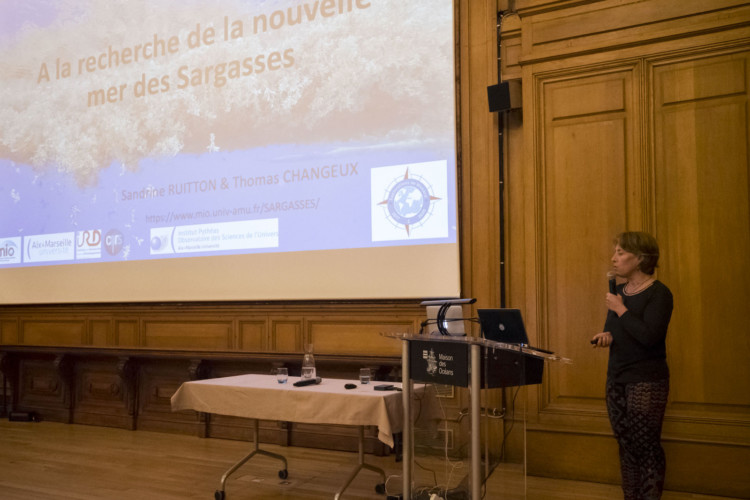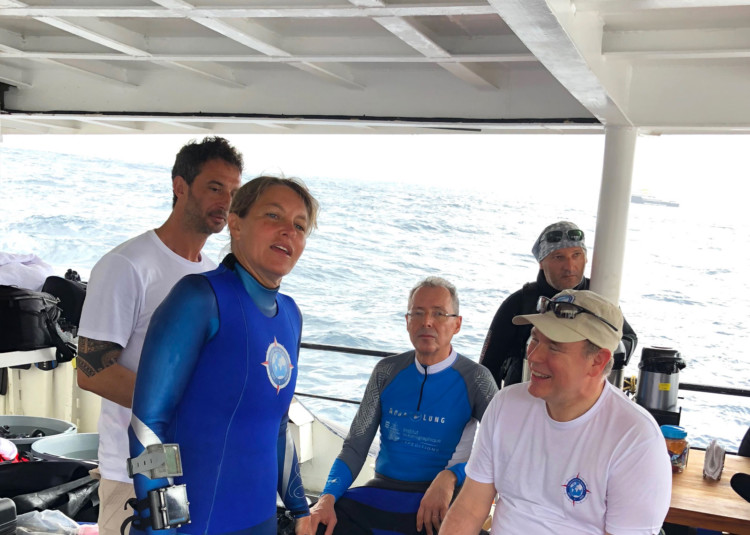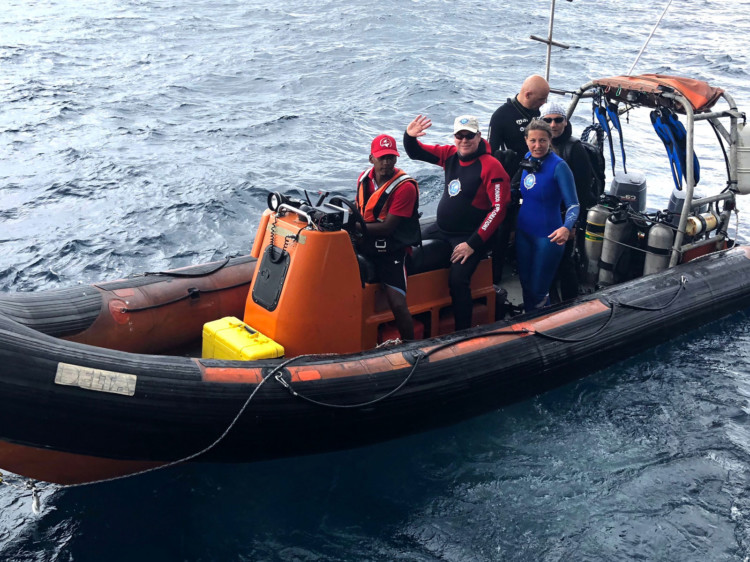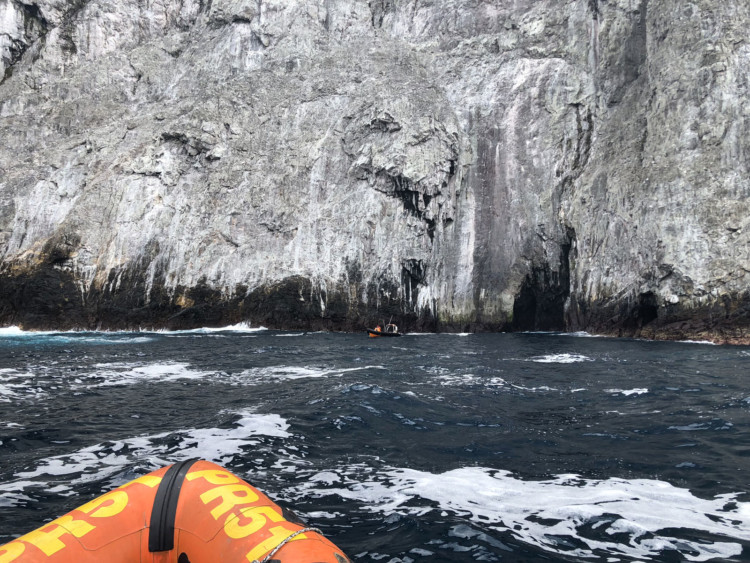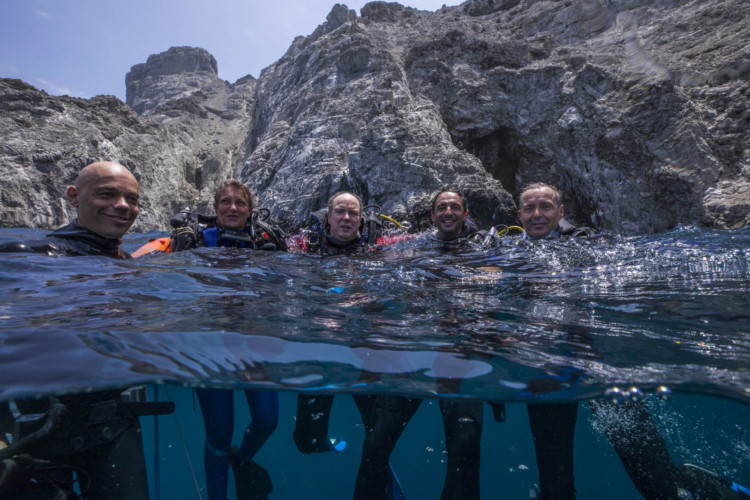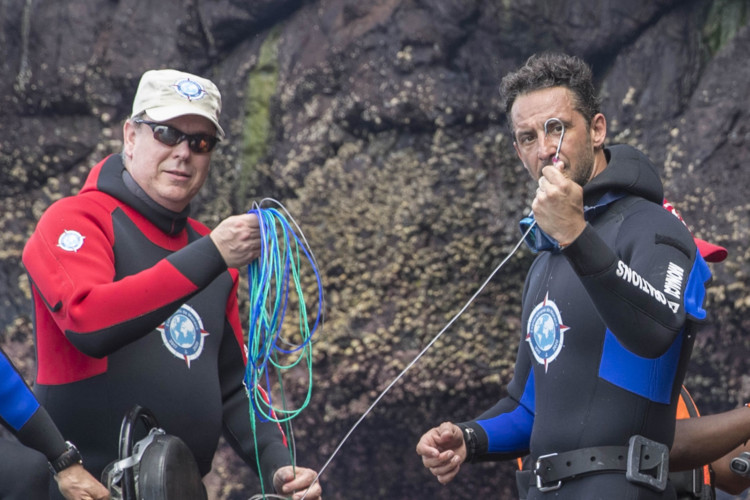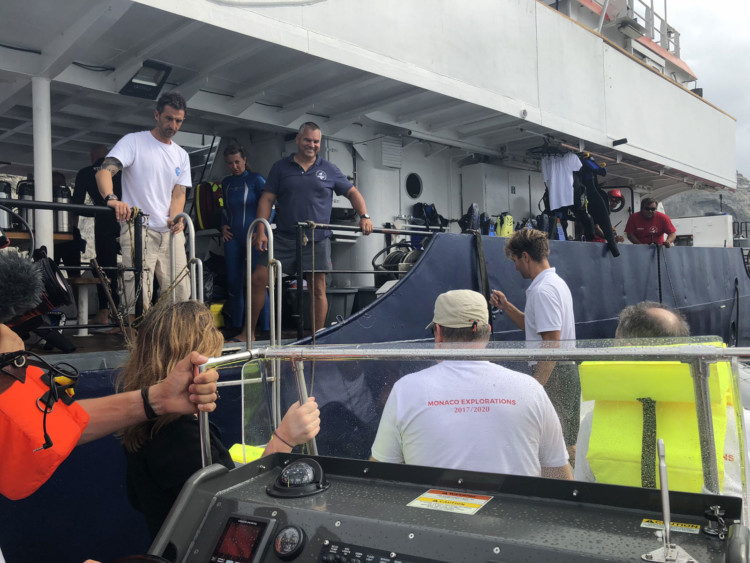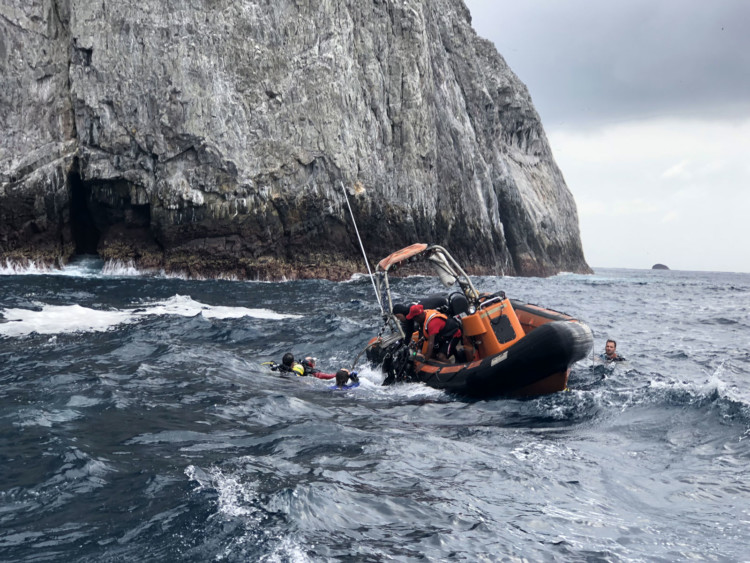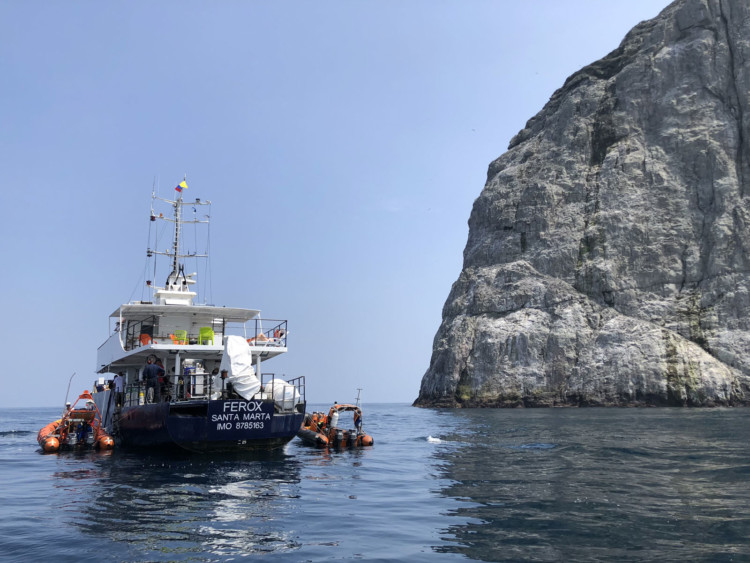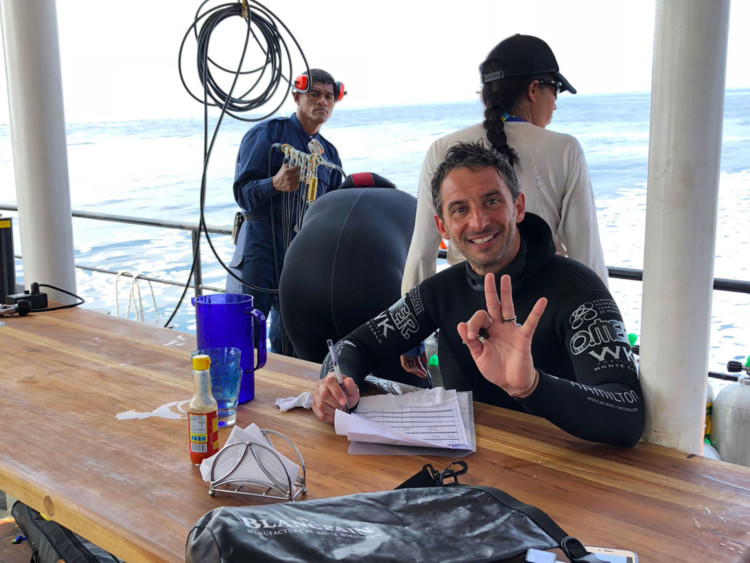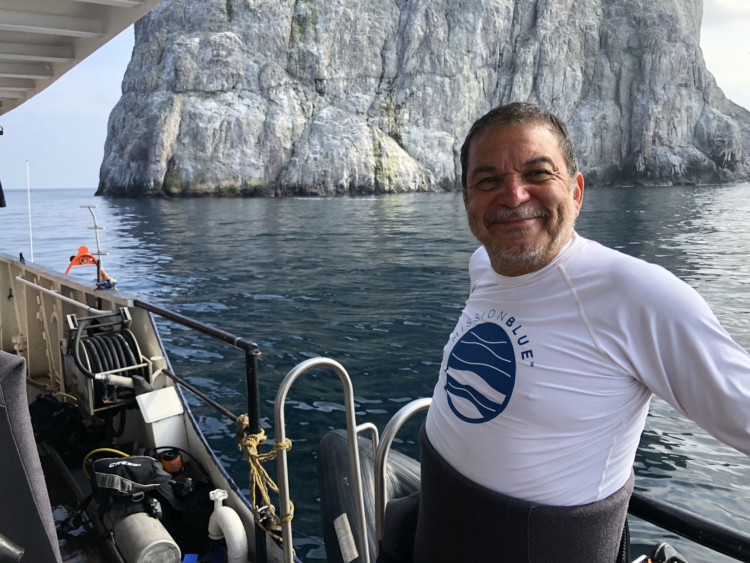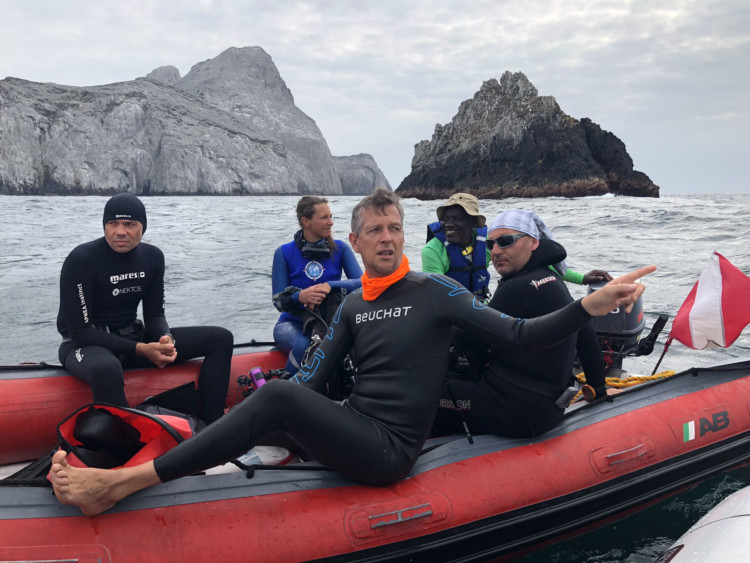This morning we were at the International School of Monaco with 230 students talking about our missions in Colombia, Martinique and Hawaii about sharks, turtles and corals. The youth of today are leaders and decision makers of the future. That’s why it’s so important to get them interested and engaged in environmental issues.
Researchers Thomas Changeux and Sandrine Ruitton from the Mediterranean Institute of Oceanography at Aix-Marseille University presented their research on Sargassum, a brown algae, at the Oceanographic Institute of Paris. The studies were carried out with the Monaco Explorations campaign on a mission crossing the Atlantic Ocean in October 2017. The research team is working to identify causes of the Sargassum proliferation, which, when it reaches shore can cause dramatic consequences for the water and air quality and health of shore communities.
[vc_row][vc_column][vc_column_text]
[/vc_column_text][/vc_column][/vc_row][vc_row][vc_column][vc_column_text][KGVID poster=”https://www.monacoexplorations.org/wp-content/uploads/2018/04/36_hours_hero.jpg”]https://www.monacoexplorations.org/videos/36hours.mp4[/KGVID][/vc_column_text][/vc_column][/vc_row]
[vc_row][vc_column][vc_column_text]Look who came to visit the baited cameras!
[/vc_column_text][/vc_column][/vc_row][vc_row][vc_column][vc_column_text][KGVID poster=”https://www.monacoexplorations.org/wp-content/uploads/2018/04/baited_camera_hero.jpg”]https://www.monacoexplorations.org/videos/baitedcamera.mp4[/KGVID][/vc_column_text][/vc_column][/vc_row]

Today is the final day of HSH Prince Albert’s visit to Malpelo with Monaco Explorations. He spent the morning hours on the Ferox and then diving with Sandra Bessudo and her team to tag sharks before departing to mainland Colombia.
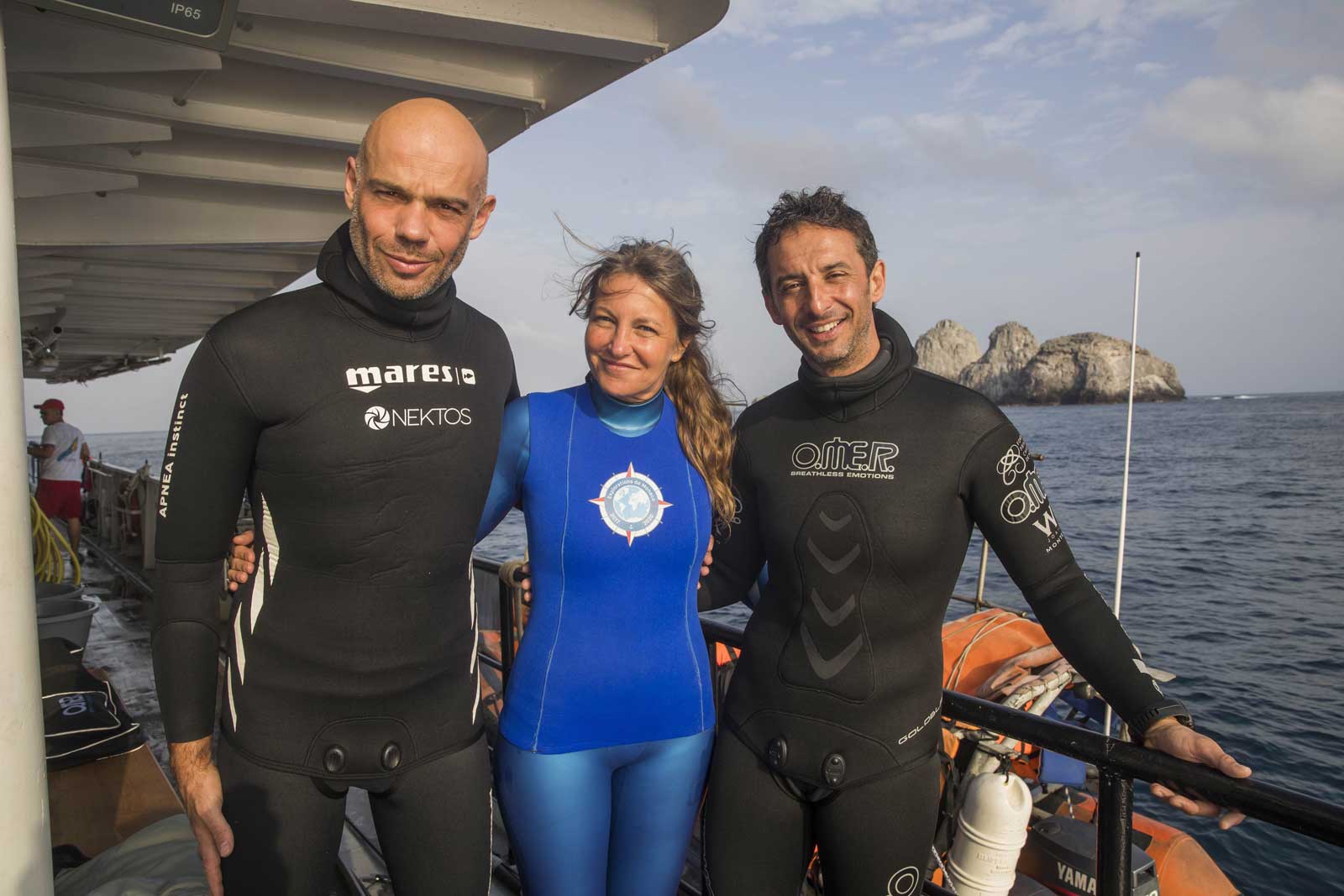
During the morning hours HSH Prince Albert II joined the Fundación Malpelo team while they tagged sharks along with freedivers Pierre Frolla and Frederic Buyle.
Freedivers tag hammerhead sharks with acoustic transmitters which allow researchers to gather data about the sharks migratory patterns.
[vc_row][vc_column][vc_column_text]
Malpelo is known as a global hotspot for marine life, and is notably home to hundreds of hammerhead sharks that come here to reproduce. Sandra Bessudo is a Colombian marine biologist and conservationist who has worked to protect Malpelo and the species here since 1989. Sandra was influential in creating the first Marine Conservation Corridor for the Eastern Tropical Pacific. She is here with Fundación Malpelo, which she established in 1999.

The main focus of the work here for Sandra and her team is to tag hammerhead sharks, which are on the IUCN Red List. Placing acoustic tags on the sharks allows researchers to better define the migratory patterns of the animals and in turn, use the data to advocate for enlarged protected areas. In this case Sandra is working with free divers to place the tags on the animals – this is the least invasive method. The target is mainly adult female hammerheads. The team is using acoustic tags, which ping when the tag surfaces, giving GPS coordinates for the location.
[/vc_column_text][/vc_column][/vc_row][vc_row][vc_column][gem_video video_src=”https://www.monacoexplorations.org/videos/Shark_Tagging.mp4″ image_src=”27813″][vc_column_text]
[/vc_column_text][/vc_column][/vc_row][vc_row][vc_column][vc_column_text]
Sandra and her team are working from the Ferox, a Colombian vessel who brings divers and scientific teams to Malpelo to work from mainland Colombia.
[/vc_column_text][/vc_column][/vc_row]
Monaco Explorations gave the opportunity to the MarAlliance’s team to spend a week at sea around Cabo-Verde.
We will have a look to this mission soon, but today let’s read about the importance of the logistic for such an expedition.
Read Exploration with Monaco in Cabo Verde (MarAlliance).
Photo © Rachel Graham / MarAlliance
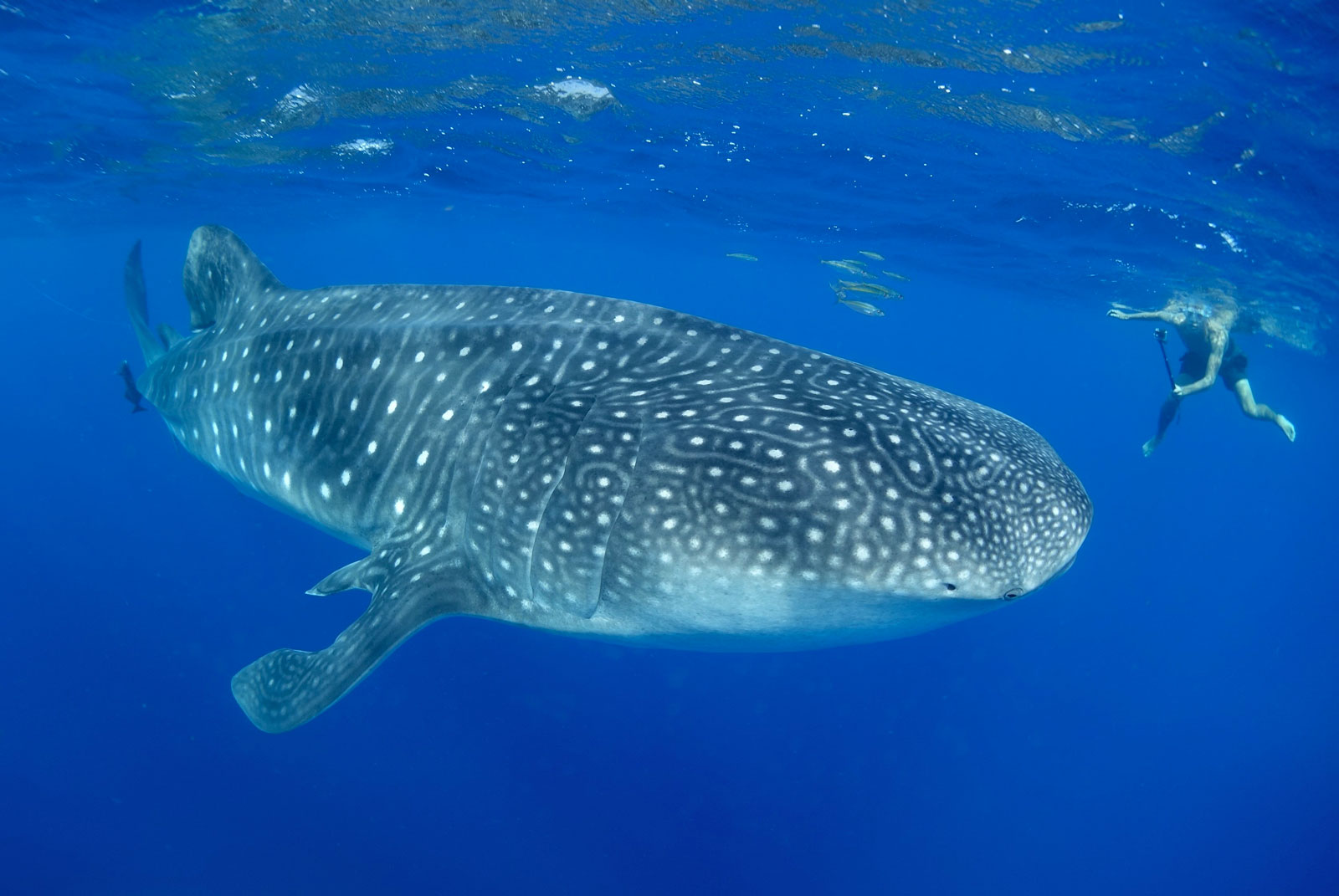
[vc_row][vc_column][gem_divider margin_top=”25″][vc_column_text]David Mouillot is a Professor at the University of Montpellier (UMR MARBEC IRD-UM-CNRS-IFREMER).
What will you be researching, and why?
Our project will focus on marine megafauna (mainly large bony fishes, sharks and mammals) living close to reefs and seamounts. Megafauna is certainly the most vulnerable group of species to fishing activities and global changes with ¼ of species being under extinction threat. This urges unprecedented conservation efforts. These efforts cannot be efficient without a better knowledge of the biogeography and habitat use for most of these species. Yet, current data are mainly based on fisheries and local observations. A new protocol, non-destructive, non-intrusive, providing standardized information on all species, will allow us to identify the last refugia of marine megafauna, if any.[/vc_column_text][vc_column_text]
How will you carry this out technically?
Environmental DNA (eDNA) is genetic material originating from organisms that can be filtered from water samples. It comes from feces, mucus, blood, and sloughed cells, tissue, and in some cases can be attached to particles. We will collect eDNA close to reefs and seamounts using pumps and filters and then we will extract, amplify and sequence eDNA. Then, these sequences will be analysed to identify species present in the sampled seawater. In parallel, we will need to build a reference database to accurately identify species in eDNA by catching individuals and sequencing some parts of their genome.[/vc_column_text][gem_image position=”centered” src=”25882″][gem_image position=”centered” src=”25889″][vc_column_text]
How is the Monaco Explorations Campaign enabling your research?
Because of the opportunity with Monaco Explorations and the characteristics of the Yersin, we will be able to reach and sample isolated reefs and deep waters which are still largely unknown ecosystems for their megafauna. The Yersin will be the first platform “at sea” to analyse biodiversity in real time with dedicated laboratories and materials on board. Also, the ability to do sequencing of eDNA is extremely helpful as it is the most limiting factor in classical research projects.[/vc_column_text][gem_image position=”centered” src=”25881″][/vc_column][/vc_row]
